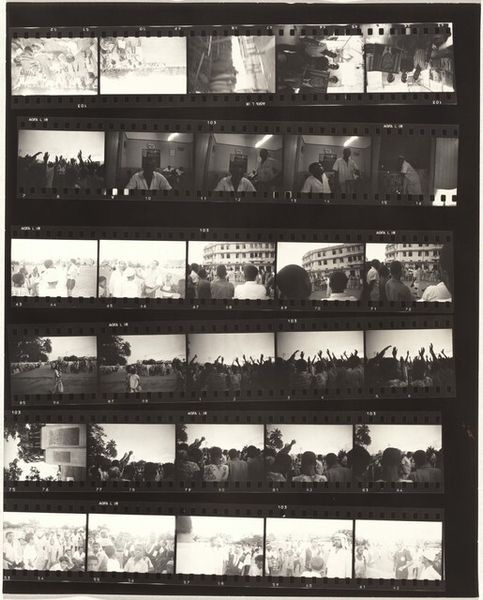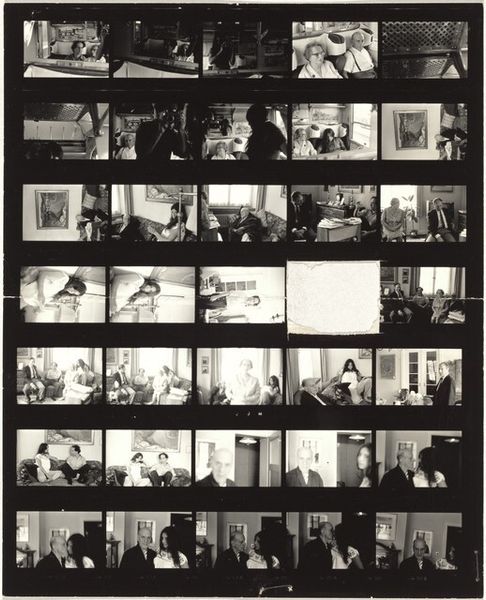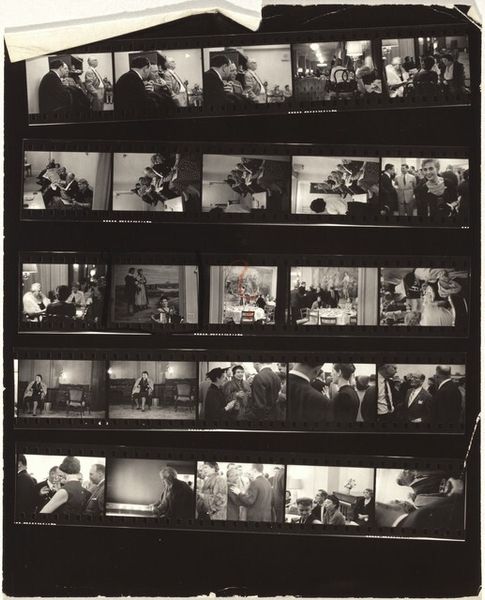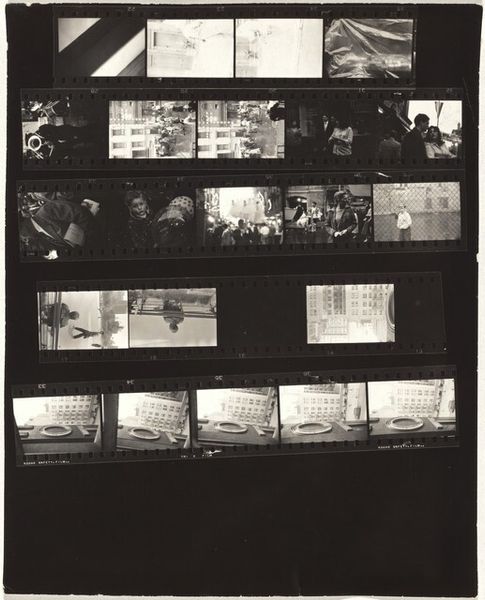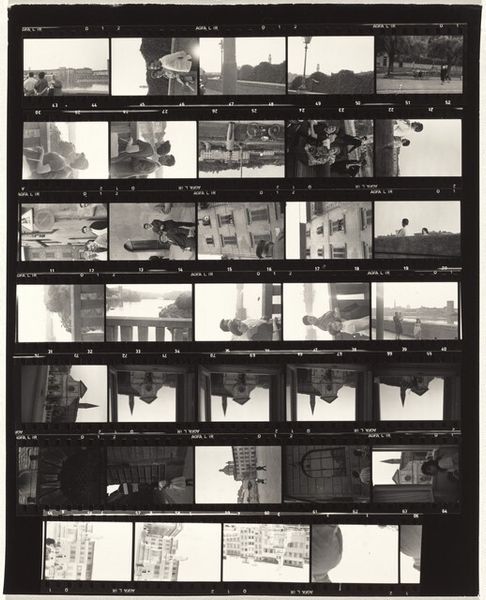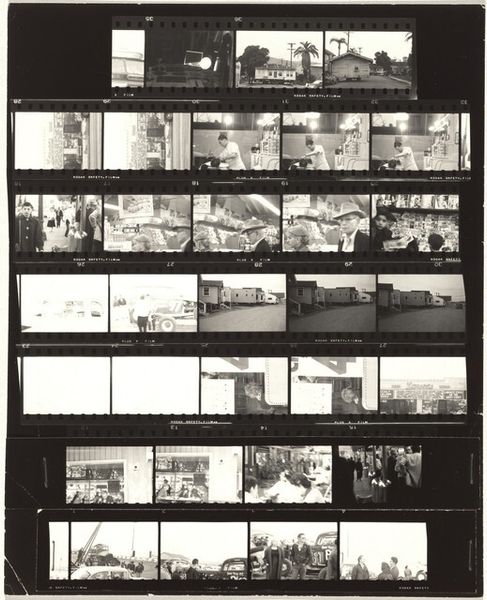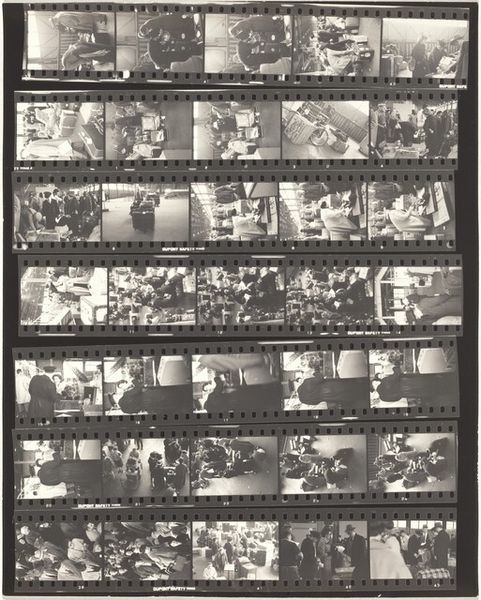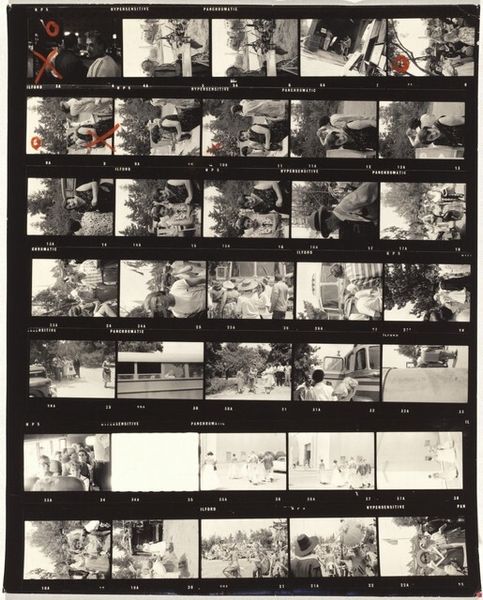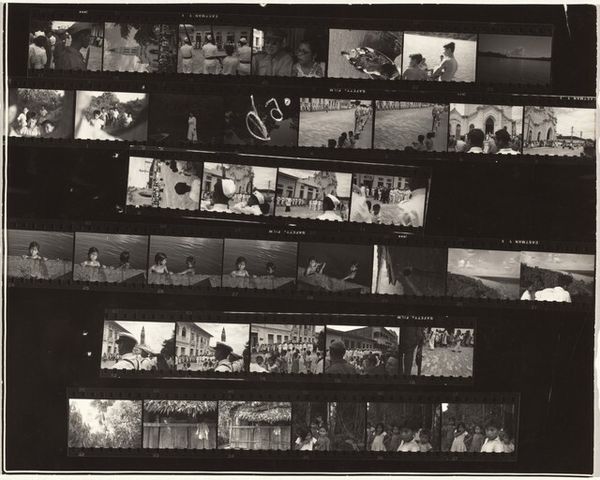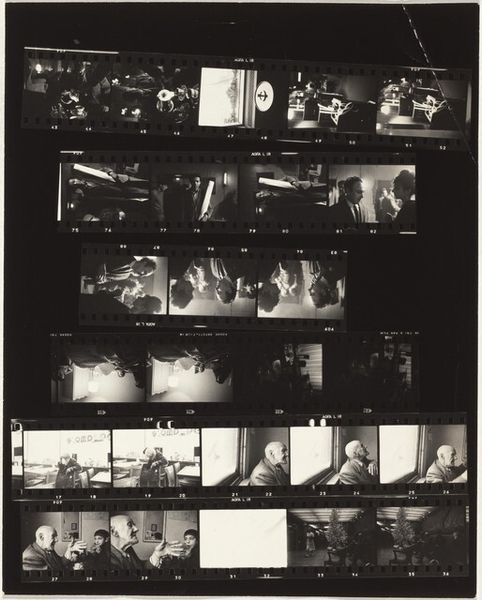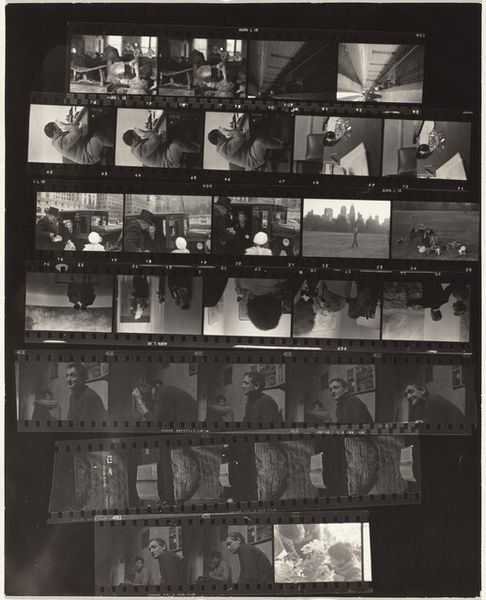
Guggenheim 539--Benediction of the Waters, Long Beach, California 1955 - 1956
0:00
0:00
photography, gelatin-silver-print
#
black and white photography
#
black and white format
#
street-photography
#
photography
#
gelatin-silver-print
#
monochrome photography
#
monochrome
#
monochrome
Dimensions: overall: 25.3 x 20.5 cm (9 15/16 x 8 1/16 in.)
Copyright: National Gallery of Art: CC0 1.0
Editor: This is Robert Frank's "Guggenheim 539--Benediction of the Waters, Long Beach, California" from 1955-56, a gelatin silver print. It's a contact sheet, showing the progression of images he took. It's fascinating seeing the artist's process laid bare like this, what catches your eye when you look at this piece? Curator: I am drawn to the seriality. This isn't just one perfect image; it's a sequence documenting a specific event in Long Beach. It's important to consider the physical production: the darkroom work, the editing, and the deliberate choice to present the images in this grid. Think of the labor involved, from the event to the print we see here, decades later. Editor: So you're focusing less on the subject and more on how it came to be? Curator: Precisely. Frank's work challenged traditional notions of photographic beauty. He embraced the gritty realities of post-war America. He presents them directly. What do you think is the intention behind displaying all the photographs as a collection and in its original strip? Editor: I see what you mean! This makes you question its value as a final artwork. Displaying all photos reveals Frank's active process, suggesting all photographs may have significance in different degrees of success... Curator: Precisely! Also, by leaving it as a contact sheet, Frank is denying any specific meaning to any frame over others and inviting us to appreciate it as work material. So it really emphasizes the making of photography. What labor, production, and consumption do you observe? Editor: It never occurred to me how radically it questions photography. So rather than presenting a pristine, perfected image, we have the raw material of art-making, labor, materiality, all there for us to consider. This definitely alters my perspective. Curator: Agreed! It reminds us to be attentive to all the often unseen components of the artwork.
Comments
No comments
Be the first to comment and join the conversation on the ultimate creative platform.
